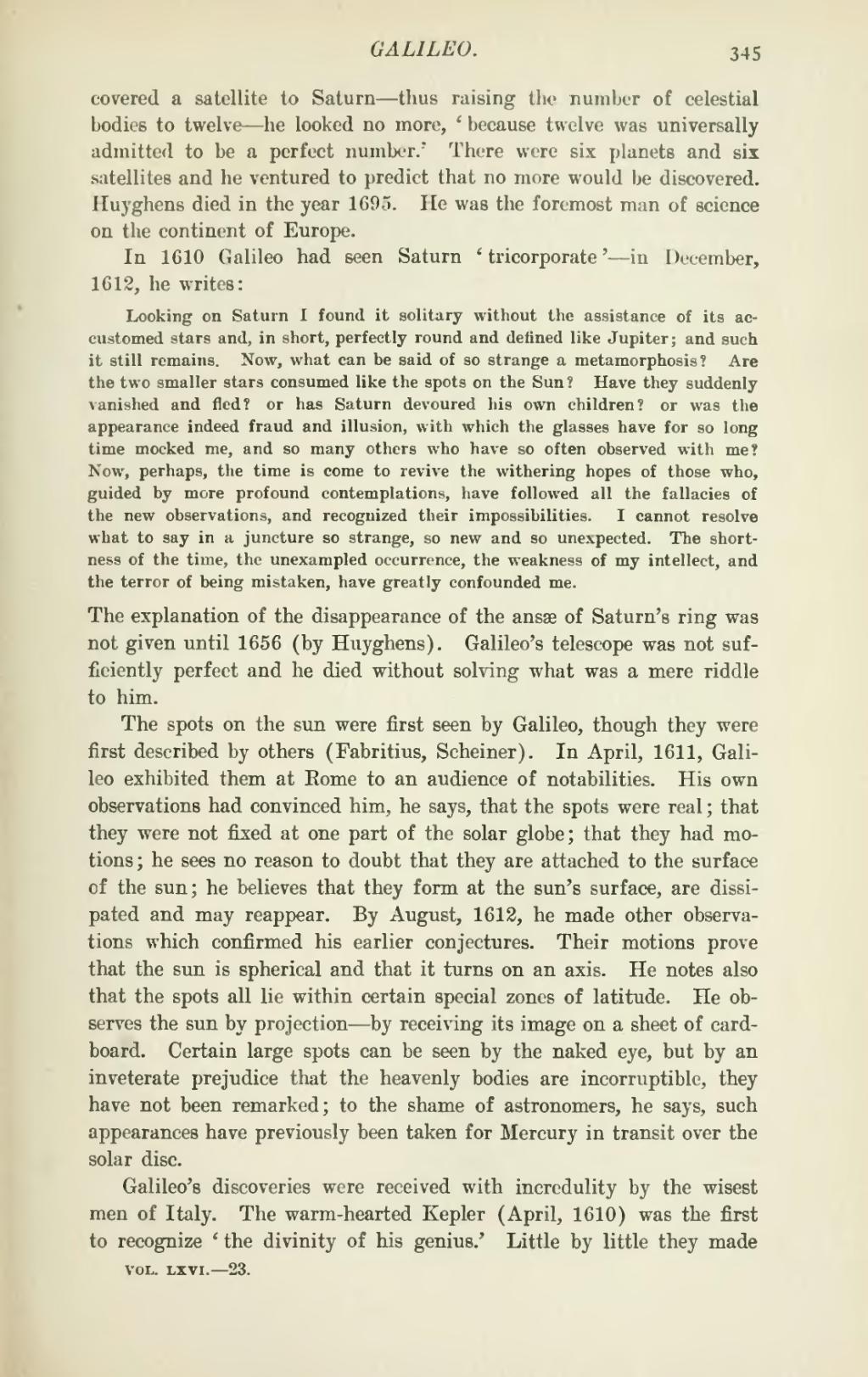covered a satellite to Saturn—thus raising the number of celestial bodies to twelve—he looked no more, ‘because twelve was universally admitted to be a perfect number.’ There were six planets and six satellites and he ventured to predict that no more would be discovered. Huyghens died in the year 1695. He was the foremost man of science on the continent of Europe.
In 1610 Galileo had seen Saturn ‘tricorporate’—in December, 1612, he writes:
The explanation of the disappearance of the ansæ of Saturn's ring was not given until 1656 (by Huyghens). Galileo's telescope was not sufficiently perfect and he died without solving what was a mere riddle to him.
The spots on the sun were first seen by Galileo, though they were first described by others (Fabritius, Schemer). In April, 1611, Galileo exhibited them at Rome to an audience of notabilities. His own observations had convinced him, he says, that the spots were real; that they were not fixed at one part of the solar globe; that they had motions; he sees no reason to doubt that they are attached to the surface of the sun; he believes that they form at the sun's surface, are dissipated and may reappear. By August, 1612, he made other observations which confirmed his earlier conjectures. Their motions prove that the sun is spherical and that it turns on an axis. He notes also that the spots all lie within certain special zones of latitude. He observes the sun by projection—by receiving its image on a sheet of cardboard. Certain large spots can be seen by the naked eye, but by an inveterate prejudice that the heavenly bodies are incorruptible, they have not been remarked; to the shame of astronomers, he says, such appearances have previously been taken for Mercury in transit over the solar disc.
Galileo's discoveries were received with incredulity by the wisest men of Italy. The warm-hearted Kepler (April, 1610) was the first to recognize ‘the divinity of his genius.’ Little by little they made

